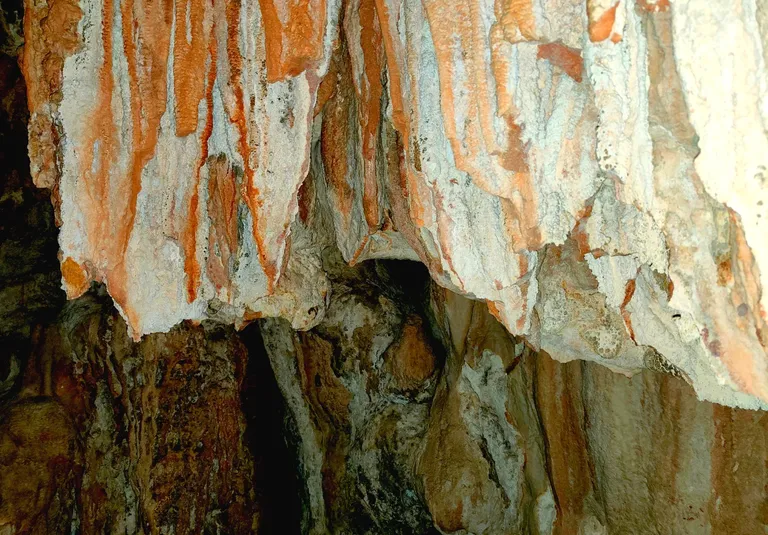
Huge rock formations hanging downwards from the ceiling, others already touching the cave's floor.
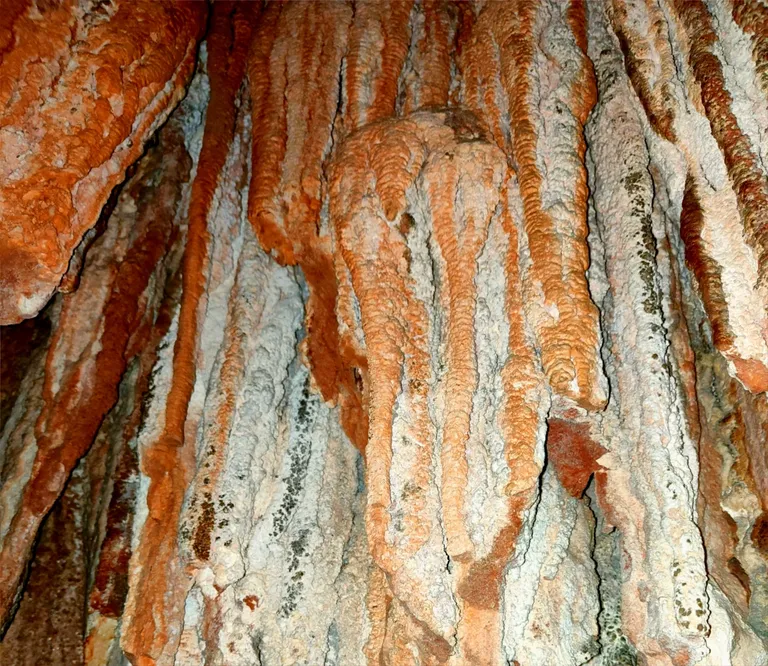
A closer look...
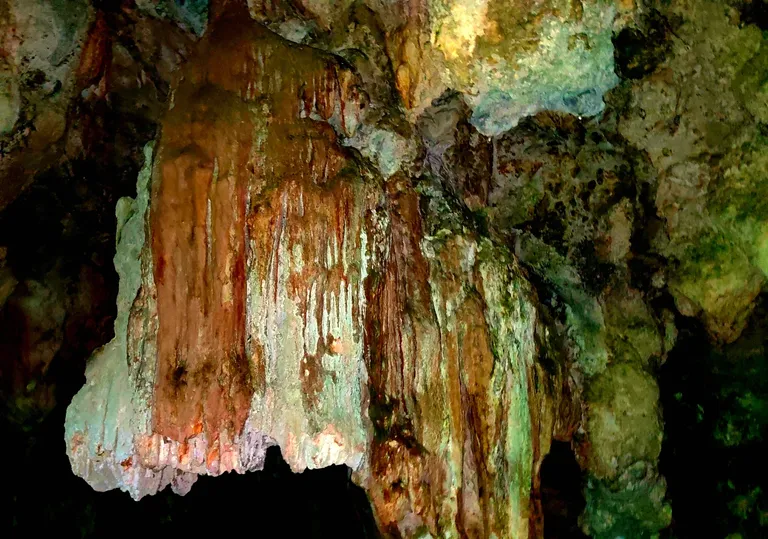
More growth from above.
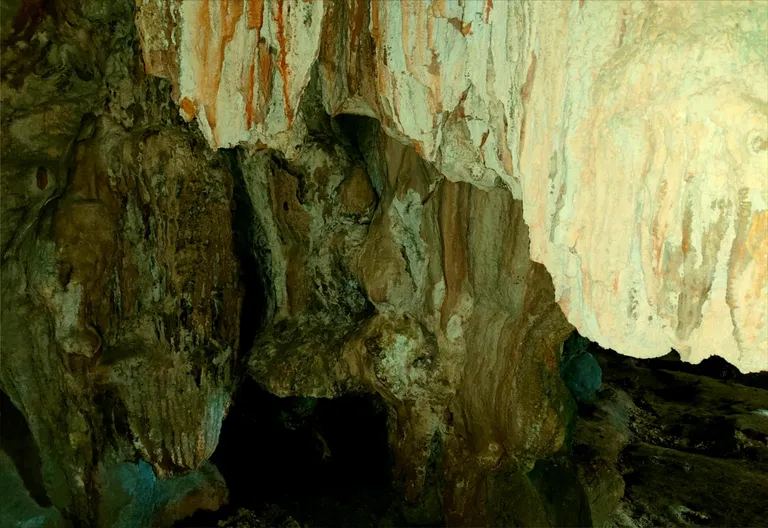
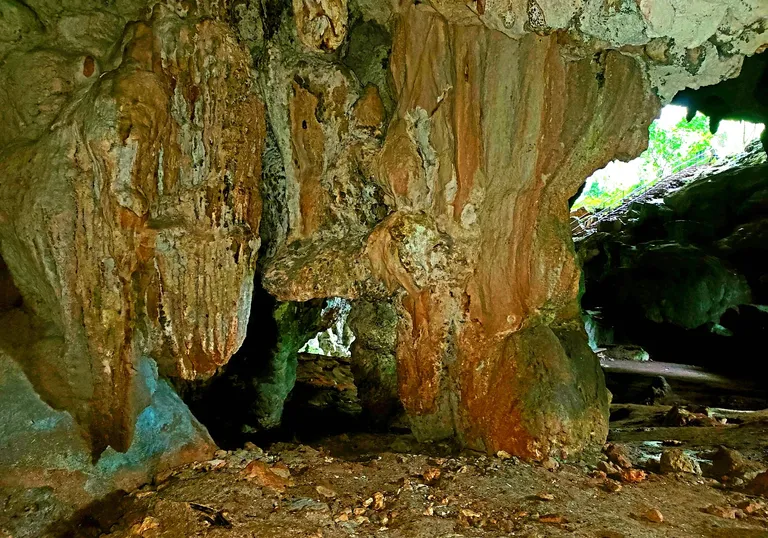
Some of the rocks already met with those from the floor. Also a glimpse of light coming through the cave's entrance (stairway).
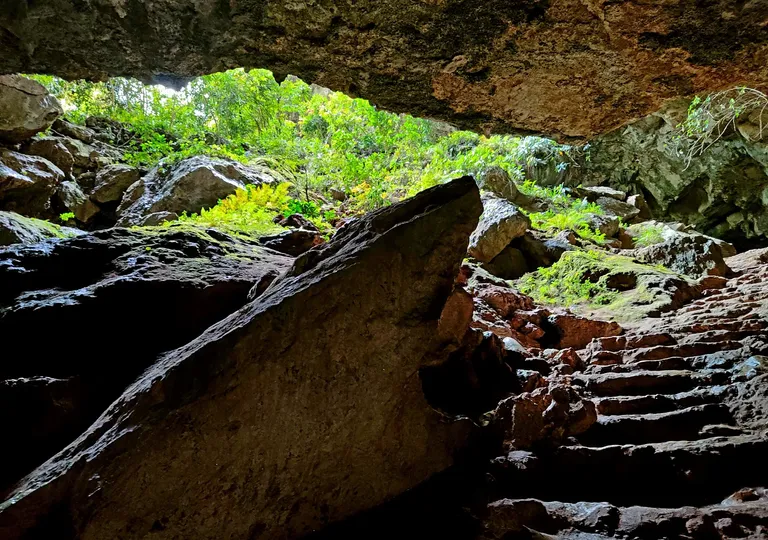
The cave's mouth seen and photographed from the lower planks of the man-made stairway.
No one goes to Sagada and leaves without a visit to Sumaguing Cave, the largest in the place hence it is also referred to as "The Big Cave." It is one of the famous tourist destinations in that town and a favorite for spelunkers.
Today, I'm only sharing a few photos of the rocks that may have been forming from thousands of years ago. I'm not sure if these can be called Stalactites for they are hanging down from the ceiling of the cave so let me just refer to them as cave rock formations.
We arrived there at around past 2 in the afternoon after our trek at the Blue Soil Mountain. We found out that the tour guides have taken the day off so we only got ourselves by the cave's entrance. We didn't dare go beyond the mouth by ourselves for we know not the ins and outs. It has been over 20 years ago when I had been to the insides of the cave and we were with an experienced guide then.
So no, I was not confident to be going in the void without proper gear and lighting. The husband was quite adventurous though that he went below the man-made stairway towards the left corner. The recent earthquakes in the country made me imagine things so I opted to stay out, lol!
He toured himself around the space down there, took time to enjoy the sights and taken snapshots of them too. In fact, he took many photos of different things which I will be sharing too one of days.
Back to the rocks though, it's fascinating to see them as they are. Makes me wonder how long had they been growing and they might still be for the years to come. One question that popped to mind was, would stalactites and stalagmites stop to grow when they meet each other and form a column? The OpenAI was the first I ran to and here's what it said:
The growth of the rock formation will typically stop when they meet, because the water that is responsible for their growth is no longer able to drip or flow between them. However, the growth of a rock formation in a cave can also be stopped by other factors such as a change in the water chemistry, a change in the rate of water flow, or a change in the cave's environment.
For example, in some caves, the water that is responsible for the formation of stalactites and stalagmites can dry up, or the cave's temperature can change and cause the minerals to stop depositing. In other caves, human activity such as the removal of formations or the introduction of lights or pollution can halt or change the growth of rock formations.
Interesting! That's why it is advised not to touch those rocks.
My vague memory of our past exploration on that same cave tells me that water was dripping almost everywhere then. Based on the husband's photos, there were only a few sections with water drips. But of course, that was just around the cave's entrance. Perhaps the insides are still vibrant, shiny and glimmering like I remember seeing them before?
That question warrants another visit which hopefully will happen someday soon...
It's a beautiful weekend here and I wish you all a fabulous one! Cheers and keep forging ahead!
Photos courtesy of the husband. 14012023/09:00ph
For the best experience view this post on Liketu







